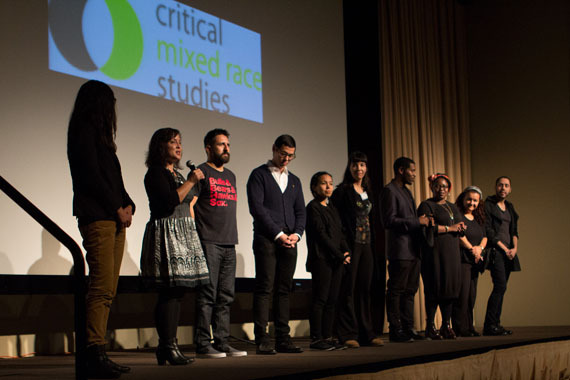EMERGING FEMINISMS, (F)Act of Blackness: The Politics of Mixed Race IdentityPosted in Articles, Communications/Media Studies, Literary/Artistic Criticism, Media Archive, United States, Women on 2016-03-01 16:12Z by Steven |
EMERGING FEMINISMS, (F)Act of Blackness: The Politics of Mixed Race Identity
The Feminist Wire
2016-02-25
Jazlyn Andrews, Guest Contributor
Colorado College, Colorado Springs, Colorado
That girl doesn’t have an ass.” The words hurled through the thick, humid air as if lobbed by a knife-thrower and struck me for reasons I couldn’t quite place at the time, reasons deeply rooted in my struggle to navigate my identity and subjectivity. My journey of self-definition has been a long and painful one that is nowhere near finished, fraught with fear of not belonging and comments made by peers negating my existence, dissecting me by claiming that I “don’t count,” their focus on my parts rather than my whole.
I was never “Black enough” to sing, “Asian enough” to get As in math classes, or “White enough” to be shielded from accusations of acceptance based on affirmative action. Hence, I find myself challenging controlling images but relying on them to validate my identity. My story is not unique considering the many mixed race women who have asked themselves time and time again: “Am I __________ enough?” or who have been on the receiving end of “What are you?” too many times to count. In fact, these experiences are so common—yet so under-analyzed—that Justin Simien created the Twitter hashtag #DearWhitePeople in order to examine the intricacies of being Black in predominantly White spaces.
Through an examination of the 2014 film Dear White People based loosely on Simien’s experiences at Chapman University, I examine how the Tragic Mulatta construction makes it acceptable for mixed race women to become sites for White men to explore their fears of, and fascinations with, an eroticized Other. Such a practice perpetuates an investment in a black-white binary that essentializes mixed race people to “either/or” rather than “both/and,” which maintains the property value of, and investment in, Whiteness. Importantly, the construction of, and reliance upon, a black-white binary erases mixed-race identities and functions to mitigate the threat we pose to blending the color line…
Read the entire article here.


